|
Please Help To Fund
The Morien Institute
Underwater Research
Amazon
Instant Video
Rent or Buy more than 50,000 top new movie releases, TV shows,
science documentaries
and all-time classics
(MANY IN HD)
All Available To
DOWNLOAD
or
STREAM
on the widest variety
of popular devices including :-
Kindle Fire HD
iPad, iPhone
Xbox One, Xbox 360
Wii & Wii U
PS4, PS3
Books featuring the Yonaguni underwater structures
“Voices of the Rocks: A Scientist Looks at Catastrophes and Ancient Civilizations”
by
Dr Robert M. Schoch
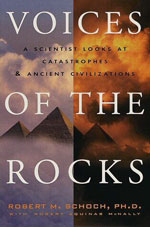
Get This Book From:
Amazon.com
Amazon.co.uk
“The great 19th-century battle between catastrophists and uniformitarians seemed to end with the notion of global cataclysms being dismissed as a back door to the supernatural.
But the catastrophist theory has gradually become more and more plausible, so that now, less than a hundred years later, it is widely believed that mass extinctions are linked to meteor strikes.”
“Voyages of the
Pyramid Builders”
by
Dr Robert M. Schoch

Get This Book From:
Amazon.com
Amazon.co.uk
“Is it a mere coincidence that pyramids are found across our globe? Did cultures ranging across vast spaces in geography and time, such as the ancient Egyptians; early Buddhists; the Maya, Inca, Toltec, and Aztec civilizations of the Americas; the Celts of the British Isles; and even the Mississippi Indians of pre-Columbian Illinois, simply dream the same dreams and envision the same structures?
Japan’s Mysterious Pyramids:
Yonaguni-jima
Only Available On DVD
Do undersea relics near Okinawa offer proof of a sophisticated civilization during the last ice age?
“Underworld: Flooded
Kingdoms of the
Ice Age”
by
Graham Hancock

Get This Book From:
Amazon.com
Amazon.co.uk
“From Graham Hancock, bestselling author of Fingerprints of the Gods, comes a mesmerizing book that takes us on a captivating underwater voyage to find the ruins of a lost civilization that’s been hidden for thousands of years beneath the world’s oceans. While Graham Hancock is no stranger to stirring up heated controversy among scientific experts, his books and television documentaries have intrigued millions of people around the world and influenced many to rethink their views about the origins of human civilization.
Now he returns with an explosive new work of archaeological detection. In Underworld, Hancock continues his remarkable quest underwater, where, according to almost a thousand ancient myths from every part of the globe, the ruins of a lost civilization, obliterated in a universal flood, are to be found.”
“Heaven’s Mirror”
by
Graham Hancock
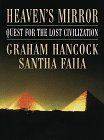
Get This Book From:
Amazon.com
Amazon.co.uk
Hancock’s chief thesis in
“Heaven’s Mirror” is that numerous ancient sites and monuments – the pyramids of Mexico and Egypt, the ruins of Angkor Wat in Cambodia, the monuments of Yonaguni in the Pacific, and the megaliths of Peru and Bolivia – are situated in such a way, geodetically, that they point towards some separate and uniform influence, some lost civilization or “invisible college” of astronomer-priests.
|
|
The Morien Institute has kept a close watch on developments since 1999, and has been just as excited about the many new batches of underwater photographs that have emerged of the Yonaguni structures (yes! there are more than one), as we have been dismayed by the many citings of the structure’s existence as somehow representing ‘the final proof’ of the existence of Atlantis and/or Lemuria.
We have consistently taken the simple view that, following the dramatic series of rises in sea-levels that marked the ending of the last Ice Age, it is inevitable that more and more evidence of ancient civilisation will be discovered on the continental shelves and shallow seas, and even further out in the oceans everywhere around the world.
Peoples in ancient times were not much different from those of today. They had a preference for building their settlements near to the sea for exactly the same reasons as we do – ports for the ships conducting foreign trade, and nearby urban developments for those involved with sea-borne trade, with fishing, as well as a simple liking for living near the seaside on coastal plains
But most of the coastal plains of the last Ice Age have long since been underwater, and The Morien Institute can confidently predict that the future for marine archaeology certainly looks very bright indeed …
“Underwater Japanese Pyramid ‘Manmade’
say Scientists”
On May 19 2001 a report on Whitley Strieber’s Unknown Country website that is no longer archived brought news that Frank Joseph, editor of “Ancient American Magazine”, would speak that night on “Dreamland” about a conference he recently attended in Japan at which Japanese geologists and archaeologists argued that the sunken pyramid structure off the coast of the island of Yonaguni near Okinawa, Japan, has been found to be man-made. It reported that:
“The structure was found by dive tour operator Kihachiro Aratake in 1985 and has been a source of controversy ever since. It appears to be a construction made of wide terraces, ramps and large steps. However, American geologists have contended that the structure is not manmade, but a natural formation.
According to the report, Japanese scientists have documented marks on the stones that indicate that they were hewn. Not only that, the tools used in this process have been found in the area, and carvings have been discovered. A small stairway carved into the rocks appears to render the theory that this is a natural formation implausible.”
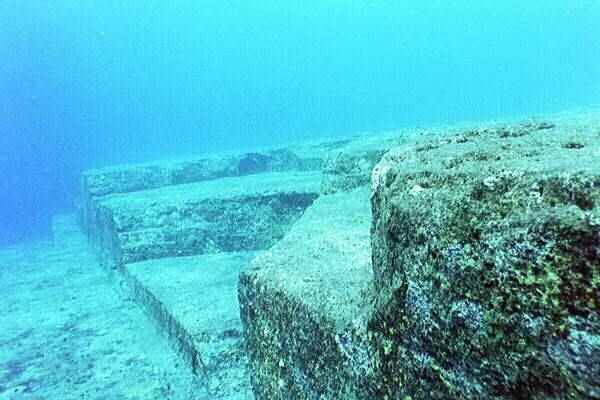
Copyright 1999 Dr. Robert M. Schoch.
The report that this enigmatic underwater structure has shown more evidence of being man-made, also offered the opinion that ‘American geologists’ have claimed that the structure is not man-made, and is a natural formation. But this contention was itself out-of-focus:
“It appears to be a construction made of wide terraces, ramps and large steps. However, American geologists have contended that the structure is not manmade, but a natural formation.”
Presumably, they were referring to Dr. Robert M. Schoch, a geologist who has dived on the structure for inspection a number of times since 1997, and whose comments seem to have been misunderstood by some academics, while being dismissed totally by increasingly desperate Atlantis-seekers.
Dr Schoch has made it clear that he feels the structure was primarily a natural structure that people in ancient times had carved out of the ‘living bedrock’ and enhanced to suit their purposes. His actual comments in 1999 were:
“We should also consider the possibility that the Yonaguni Monument is fundamentally a natural structure that was utilized, enhanced, and modified by humans in ancient times.”
This type of activity seems to have been widely used in ancient times all over the archaic world, and has become known as ‘terra-forming’ – nature suggests a shape, and human hands go to work to modify it as they want or need it to look.
This could have been done for ritual purposes, or for purely practical ones. No-one can yet say for sure.
According to the report of the 2001 conference in Japan, there have been a number of discoveries recently that add a great deal of weight to the theory that the structure was certainly ‘terra-formed’ at least by ancient people:
“Japanese scientists have documented marks on the stones that indicate that they were hewn. Not only that, the tools used in this process have been found in the area, and carvings have been discovered. A small stairway carved into the rocks appears to render the theory that this is a natural formation implausible.
The problem with all of this for western scientists is that it implies that an unknown eastern culture had developed a high degree of organization thousands of years before the earliest western civilizations. Geologically, the Yonaguni pyramid sank into the ocean at the end of the last ice age, around ten thousand years ago. Some western geologists have theorized that, if it is manmade, it must have risen from the sea in more recent times, and been carved then.
However, the discovery of other, similar structures beneath the sea of Japan was also announced at the conference. If these prove to be similar to the Yonaguni pyramid they may rewrite the history of early man.”
Studies of the structures, such as that conducted over the past ten years or so by Professor Masaaki Kimura, a marine geologist at the Department of Physics and Earth Sciences at the University of the Ryukyus, Okinawa, were responsible for initiating the debate that currently rages about the Yonaguni ‘monument’.
In September 1997 Dr Schoch dived on the structure for the first time. He had been invited there by Graham Hancock, who was at the time researching “Heaven’s Mirror”, filming a series of TV programmes, and presumably laying the groundwork for his recent book “Underworld”.
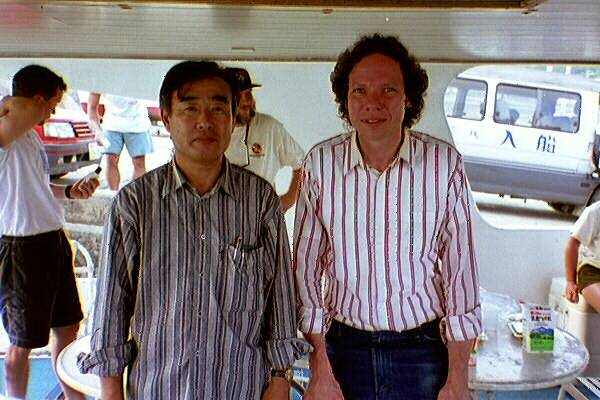
Prof. Kimura & Dr. Schoch on Yonaguni Island 1999
Whilst there, Dr Schoch debated the structure, and the local geology of nearby Yonaguni Island, with Professor Masaaki Kimura, whose work on the underwater structures in that area had come to the attention of Graham Hancock some time earlier, and had featured in his books and on the television programmes that he presented.
The controversy that had developed over the next few years was covered in The Japan Times on July 19 2000, which also reported on the ancient myths and legends of the Okinawa region:
“In Okinawan folklore, there are tales of traditional gods and a land of the gods called Nirai-Kanai, an unknown faraway land from where happiness is brought. Kimura said the Yonaguni Monument may have been built to serve a similar deity.”
In order to progress the debate further, and to get more information and access to more images of the structures found underwater off the coast of Yonaguni-jima, The Morien Institute contacted Professor Kimura in July 2002, and in a series of emails over the next few months conducted an interview with him about his work on the Yonaguni structures, and similar discoveries in the same geographical area.
Below you can access the exclusive Morien Institute interview with Professor Kimura completed in October 2002, and also take a closer look at the opinions of Dr. Robert M. Schoch in his own words.
the Yonaguni structure as seen by Prof. Masaaki Kimura
the Yonaguni structure as seen by Dr. Robert M. Schoch
No doubt we will be hearing a lot more from the Yonaguni area in the near future, as structures have been recently discovered underwater off other Japanese islands such as Chatan and Kerama, and we are reliably informed that walls, and possibly ancient roads, have been discovered in the Straits of Taiwan, about 20 – 30 feet underwater between the island of Taiwan and mainland China.
History’s Mysteries
“Do undersea relics near Okinawa offer proof of a sophisticated civilization during the last ice age?
Archeologists have long believed that civilization as they define it — intelligent, tool-making, monument building, social humans — began about 5,000 years ago.
But submerged beneath the waves near the Japanese island of Yonaguni is evidence that may well overturn that long-held theory.
A small but persuasive number of scholars and scientists have long thought that “advanced” societies may have existed as long as 10,000 years ago.
Their theories, however well reasoned and defended, have been hamstrung by a lack of evidence.
But recent discoveries of man-made artifacts on the Pacific seafloor may well prove to be the smoking gun that will propel this alternative view of civilization to prominence”.
see the evidence with ‘unique underwater footage’
of the various Yonaguni structures in the
‘History Channel’ TV programme
“Japan’s Mysterious Pyramids”
DVD
or
VHS
|
|
Please Help To Fund
The Morien Institute
Underwater Research
“Ancient Jomon of Japan”
by
Junko Habu

Get This Book From:
Amazon.com
Amazon.co.uk
“Prehistoric Japan:
New Perspectives on Insular East Asia”
by
Keiji Imamura

Get This Book From:
Amazon.com
Amazon.co.uk
“Jomon of Japan: The World’s Oldest Pottery”
by
Douglas Moore Kenrick
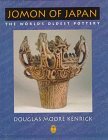
Get This Book From:
Amazon.com
Amazon.co.uk
“In the Wake of Jomon: Stone Age Mariners and a Voyage Across
the Pacific”
by
Jon Turk
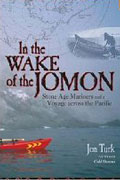
Get This Book From:
Amazon.com
Amazon.co.uk
“An Archaeological History of Japan, 30,000 B.P. to A.D. 700”
by
Koji Mizoguchi

Get This Book From:
Amazon.com
Amazon.co.uk
“Origins of the Sphinx:
Celestial Guardian of Pre-Pharaonic Civilization”
by
Robert M. Schoch Ph.D.
and
Robert Bauval
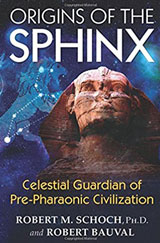
Get This Book From:
Amazon.com
Amazon.co.uk
“Sacred Texts and Buried Treasure:
Issues on the Historical Archaeology of
Ancient Japan”
by
William Wayne Farris

Get This Book From:
Amazon.com
Amazon.co.uk
“Shintao: The Sacred Art of Ancient Japan”
by
Victor Harris
(Editor)
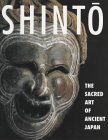
Get This Book From:
Amazon.com
Amazon.co.uk
Amazon
Instant Video
Rent or Buy more than 50,000 top new movie releases, TV shows,
documentaries and
all-time classics
(MANY IN HD)
All Available To
DOWNLOAD
or
STREAM
on the widest variety
of popular devices including
Kindle Fire HD
iPad, iPhone
Xbox One, Xbox 360
Wii & Wii U
PS4, PS3
|